A serene breeze blows, the season when beautiful pink light floods in with the dawn has begun. The sakura trees that have withstood the harsh cold are dreaming of the days they will come into bloom. In Iwate Prefecture, which prides itself on its famous cherry-blossom viewing locations such as Koiwai Farm and Hanamaki Onsen, the folktales about yokai are interweaved with the lives of those who live there. This spring, while enjoying the scenery of sakura blooming against the backdrop of snow lingering on distant mountain peaks, why not go hunting for the yokai of Iwate Prefecture.
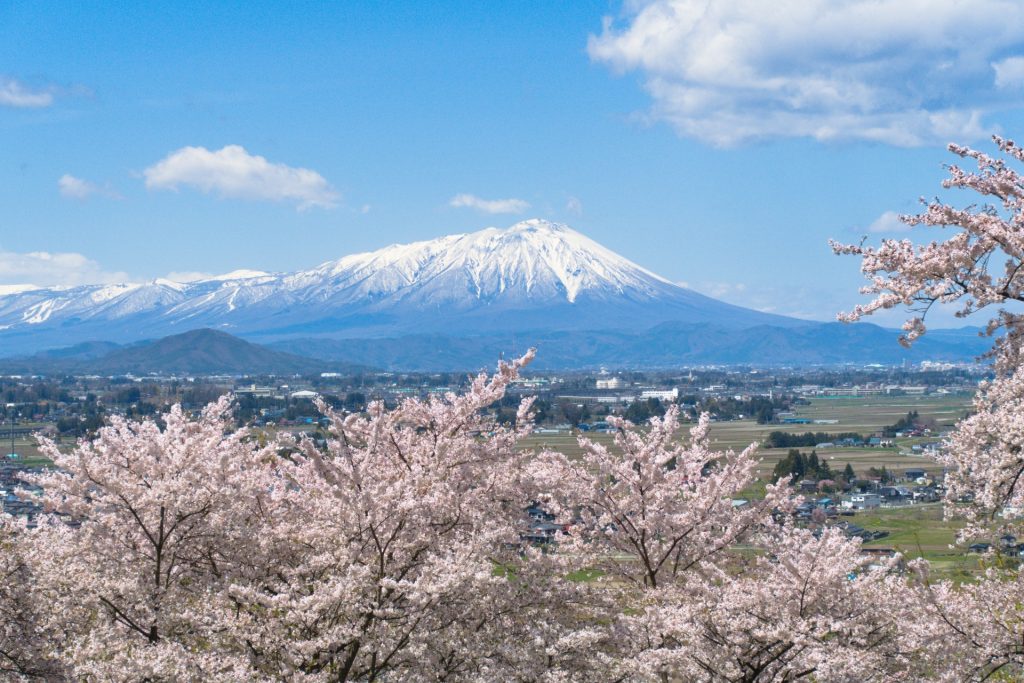
Tono, a City of Many Strange Tales and Steeped in Folklore
Iwate Prefecture’s Tono City plays host to much folklore about kappa, zashikiwarashi*1, and other strange happenings surrounding the mountain. Those otherworldly tales were collected, along with records of the lifestyles of those residing in Tono at that time, in the book Legends of Tono by Kunio Yanagita who visited Tono during the Meiji period (1868–1912).
Upon the arrival of spring, cherry blossoms bloom like a mist floating alongside the Sarugaishi River. The cherry-tree-lined path known as Ayaori Cherry Trees is part of a selection of famous cherry blossom sightseeing locations in Tohoku known as the Tohoku Yume no Sakura-kaido (Tohoku’s Dream Cherry Blossom Road). The view of the city surrounded by mountains and the river with cherry blossoms in full bloom woven into the scenery is truly like that of a watercolor painting.
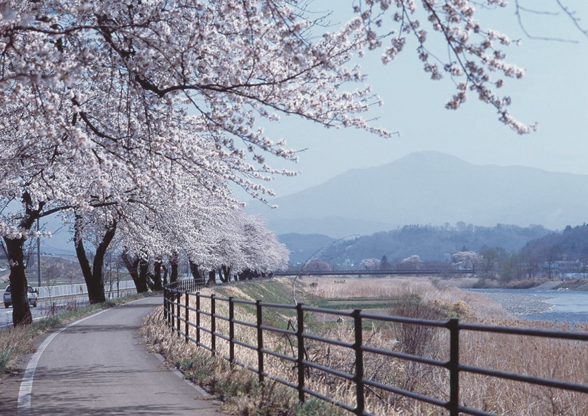
If the Place Changes So Does the Kappa? The Truth about the Kappa
Stories about the kappa of Tono are also featured in the book Legends of Tono. The most famous image of the kappa is a green turtle-like creature with a shell on its back and a plate on its head. The plate is filled with water and if it dries out, the kappa loses its strength. It has a beak on its face, webbed hands, and dwells in rivers and swamps. The kappa enjoys sumo wrestling and cucumber, and has the terrifying reputation of dragging humans or even horses to the depths of its watery lair.
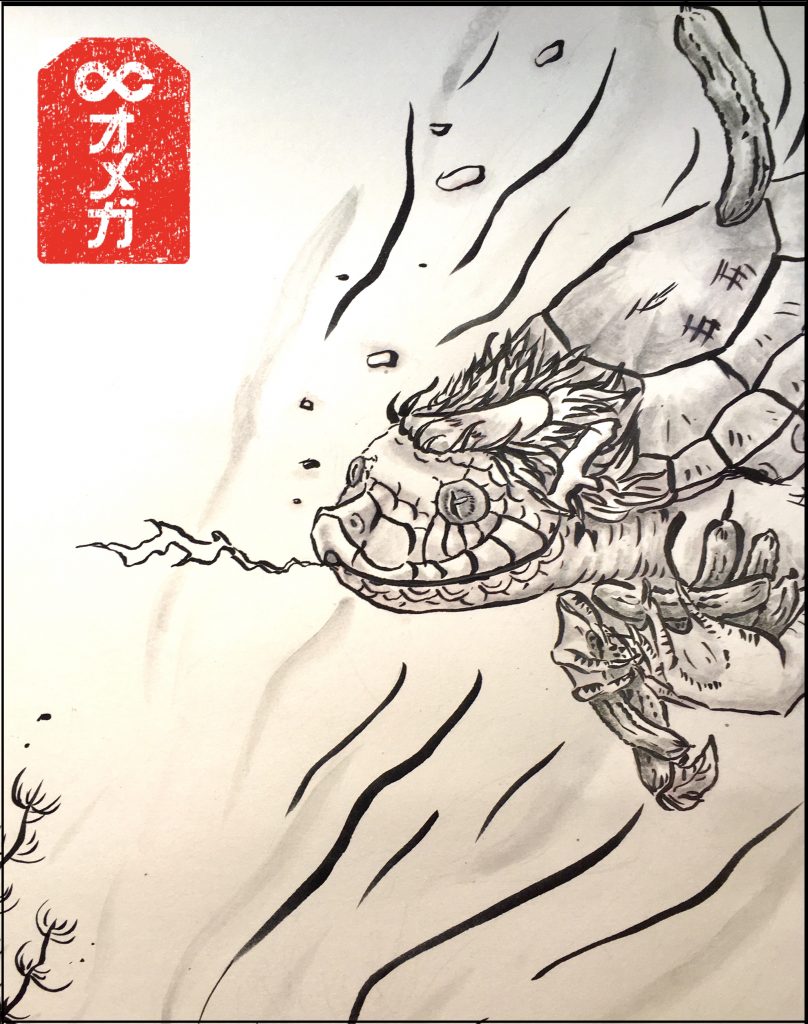
However, this nationally recognized image of the kappa wasn’t established until the Edo period (1603–1868); a time during which woodblock printing was flourishing. The naming of the original kappa, along with its form and behavior, would change depending on the region it was inhabiting.
For example, in Amami Oshima it is known as kenmon. Its entire body is covered in brown hair and the plate on its head is filled with oil not water. In Kumamoto Prefecture, it is called garappa and is said to dwell in the mountains during winter where it takes on the form of the one-eyed yokai known as yamawaro. The kappa of Miyaszaki Prefecture has two names—hyozunbo and hyosube. Akin to the kappa of Kumamoto, when winter comes, the hyozunbo is said to go to the mountains where it takes on a bird-like shape and flocks to the sky.
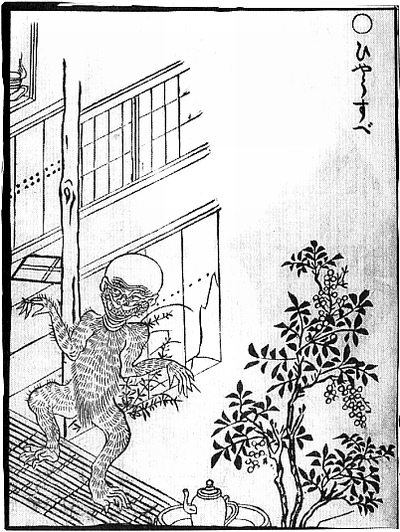
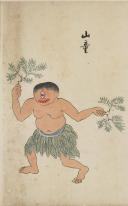
Right: Yamawaro (Kumamoto Prefecture, International Research Center for Japanese Studies)
Kappabuchi Pool—A Present Day Remaining Kappa Dwelling
So, just what kind of kappa is the one that dwells in Tono? The kappa of Tono is known as medochi. Its unique features include its red face and its body that is more resemblant of a monkey than a turtle.
The gently flowing stream in which the legend of the kappa still remains runs behind the Joken-ji Temple of Tono City’s Tsuchibuchi-cho. According to Legends of Tono, it is said that a kappa, who tried to drag a horse into the river, was brought to trial by humans where it swore never to get up to such mischief again. Nowadays on the banks of this stream, known as Kappabuchi Pool (kappa pool), there are small shrines dedicated to the kappa god.
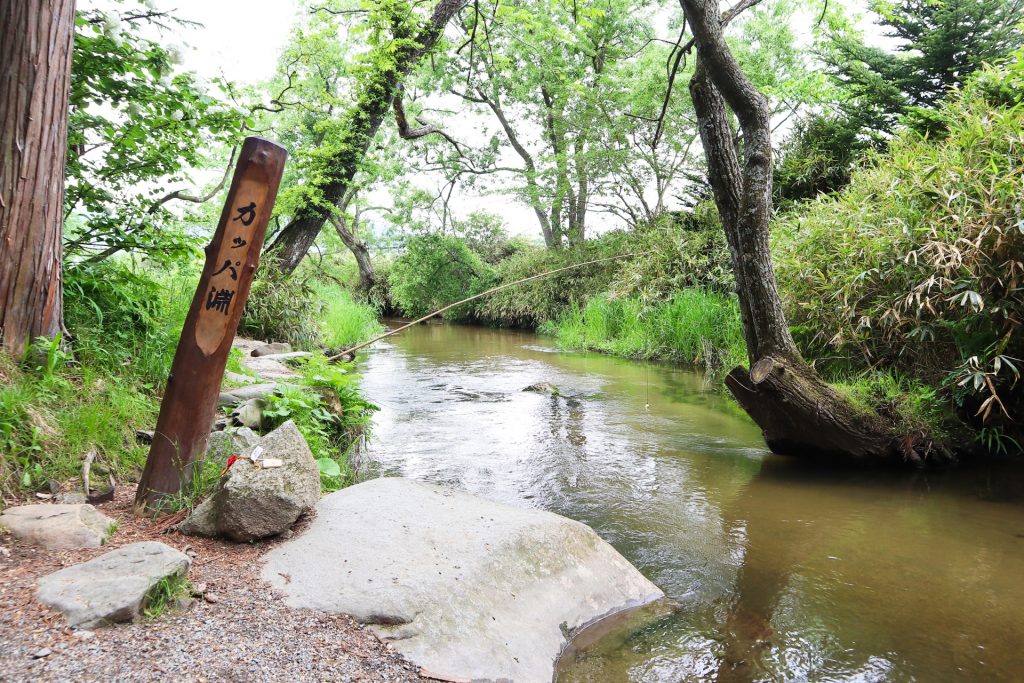
A fishing rod lies next to Kappabuchi Pool in the gloom of midday. At the end of the fishing line is a fresh cucumber that toys with the surface of the cool water. Take a seat on a rock, cast the fishing line and listen carefully for the sounds of a kappa who may be eying up the cucumber from the shadows. But whatever you do don’t fall asleep! Because the kappa’s real target might be you!
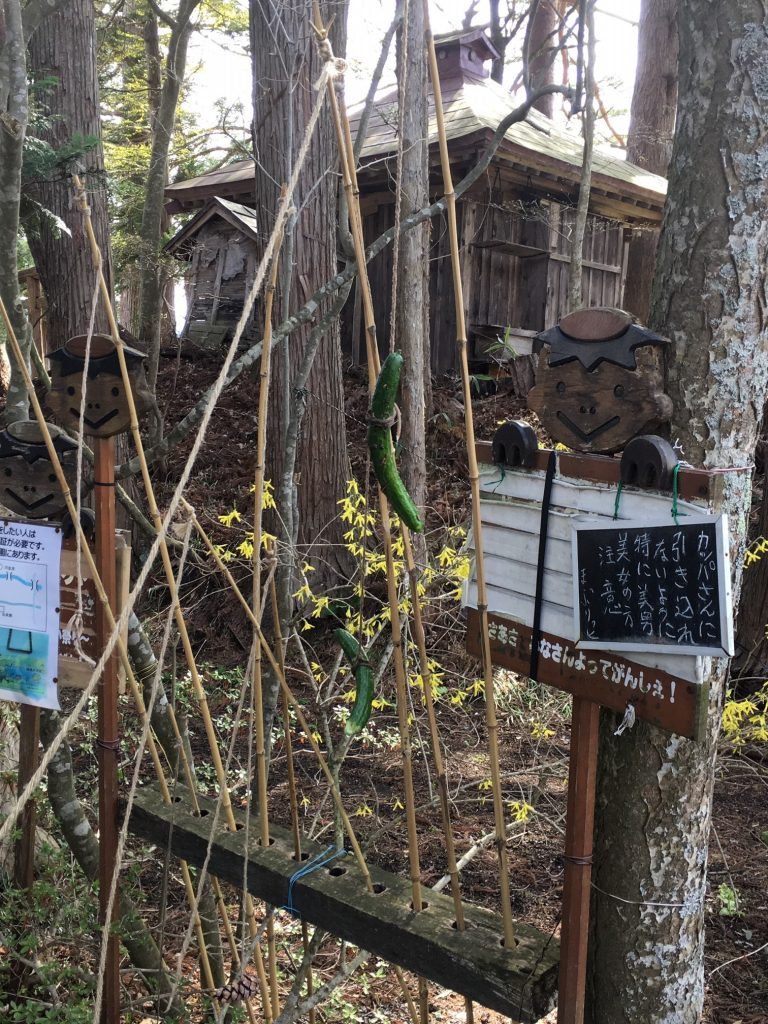
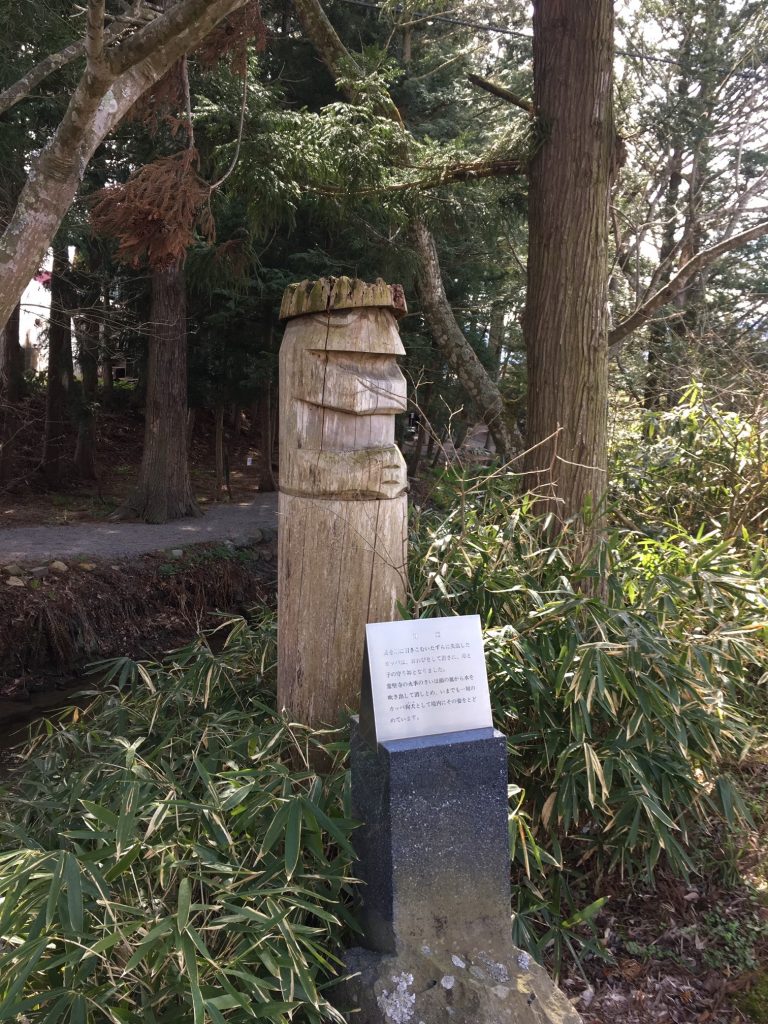
In addition to Kappabuchi Pool, the details of other places that provide the stage for various other strange stories are written in Legends of Tono. Leafing the book’s pages while strolling through the city of Tono when in bloom, brings the words of the storytellers to life.
There are many more yokai legends and yokai spots in Iwate Prefecture. We hope you are looking forward to future installments where we will introduce various other yokai of Iwate such as the yamaotoko and zashikiwarashi.
Unpublished photos are now available on our Instagram!
[Footnote]
*1 Zashikiwarashi is a yokai that takes the form of a human child. It brings riches to the family in whose house it resides, but leaves them in ruin should it depart.
[References]
Tada, Katsumi. 2012. Genso Sekai no Junintachi IV (Truth in Fantasy IV) (Japan). Shinkigenbunko
Mizuki, Shigeru. 1994. Zusetsu Nihon Yokai Taizen (Explain: Encyclopedia of Japan’s Yokai). Kodansha Plus Alpha Bunko
“No. 56 Ayaori Cherry Trees,” Tohoku Yume no Sakura-kaido (Tohoku’s Dream Cherry Blossom Road) (website), accessed March 11, 2020, https://www.tohoku-sakurakaido.jp/en/sakuratourism/view/56
“Monster and Yokai Image Database,” International Research Center for Japanese Studies (website), accessed March 11, 2020, https://www.nichibun.ac.jp/YoukaiGazou/
We are accepting applications for writing tourism and cultural articles in Japanese and/or English, multilingual translations and other services. For inquiries, please contact us:
Tel: (+81) 3-6902-9030
Email: info@omega-com.co.jp
Note: Unauthorized copying and replication of the contents of this site, text and images are strictly prohibited. All Rights Reserved.
